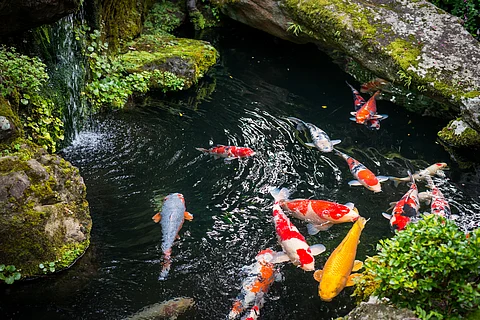

It has been found that almost 25 per cent of the 23,496 studied species of decapod crustaceans, fishes and odonates are threatened with extinction.
The finding has been tabled by a multi-taxon global freshwater fauna assessment for the International Union for Conservation of Nature (IUCN) Red List of threatened species. The analysis was published in Nature Journal on January 8, 2025.
In exact numeric terms, 4,294 species out of 23,496 freshwater fauna on the IUCN Red List are at high risk of extinction.
The greatest number of threatened species were found in Lake Victoria, Lake Titicaca, Sri Lanka’s wet zone and the Western Ghats of India. These areas nestle some of the highest freshwater biodiversity in the world, including many species found nowhere else.
A quarter of freshwater species are at high risk of extinction, with 89 confirmed and an additional 178 suspected extinctions since 1,500.
The majority of these were native to the US (22 species), Mexico (15 species) and the Philippines (15 species, all of which were endemic to Lake Lanao). Eleven species, all freshwater fishes, have been deemed as extinct in the wild, and survive only as captive populations, with eight of these native to Mexico.
The exact number of extinctions of freshwater species would probably be higher given the overall lack of research on and long-term monitoring of freshwater biodiversity, as well as the existence of extinct undescribed species that were not assessed on the IUCN Red List, the researchers pointed out.
Interestingly, agriculture and invasive species were the major threats to both freshwater species and tetrapods.
The IUCN co-authored study pointed out that some threats are found to be more prevalent to freshwater species, especially pollution, dams and water extraction, and thus they required targeted actions in response. These primary threats would require changes in water management practices at a catchment scale, over and above species-specific or site-based actions.
Due importance should also be given to address overharvesting as that was also considered as a particularly prominent threat in driving freshwater species extinctions.
“Close to one-fifth of threatened freshwater species are recorded to be affected by climate change and severe weather events,” the study mentioned.
Climate change negatively affected freshwater ecosystems both directly, for example, by shifting temperatures, flow regimes and leading to more severe weather events, and indirectly, for example, by amplifying other threats, notably invasions and increased human demand for water storage. Globally, this is an intensifying threat and the researchers expected its proportional effect to increase over time.
Where there are areas of high spatial overlap between tetrapod and freshwater species conservation priorities, it is important that both groups are actively included in management and conservation action plans.
The analysis highlighted differences in key habitats and threats between the two groups, such that meeting the needs of tetrapods cannot be assumed as sufficient to conserve freshwater species at local scales.
The study emphasised the urgency to act quickly to address threats to prevent further freshwater species declines and losses.
Freshwaters support over 10 per cent of all known species, including approximately one-third of vertebrates and one-half of fishes, while only covering less than 1 per cent of the surface of the Earth. This diversity of freshwater species provides essential ecosystem services such as nutrient cycling, flood control and climate change mitigation.
Catherine A Sayer, IUCN’s Freshwater Biodiversity lead and lead author said that lack of data on freshwater biodiversity can no longer be used as an excuse for inaction.
“Freshwater landscapes are home to 10 per cent of all known species on Earth and key for billions of people’s safe drinking water, livelihoods, flood control and climate change mitigation, and must be protected for nature and people alike,” she added.
The 2025 IUCN World Conservation Congress will be held in Abu Dhabi, 9-15 October 2025. It is hoped that the Congress would guide conservation for the next four years, as the world works to achieve the sustainable development goals and the Kunming-Montreal Global Biodiversity Framework targets by 2030.